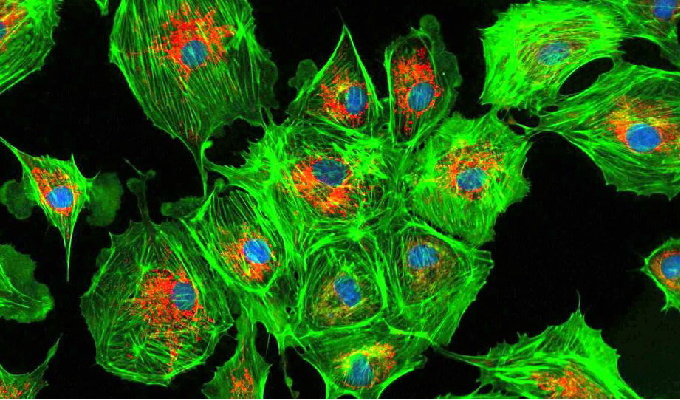
Every type of cell has different membrane properties, meaning that transfection of your specific nucleic acid can become challenging.
To overcome transfection limitations, RJH Biosciences have developed a new range of transfection reagents to transfect mammalian cells with specific nucleic acids.
Access to this new technology now through tebu-bio in Europe!

The foundation of the transfection reagent is based on cationic lipopolymers with optimal balance of cationic charge and hydrophobic (lipid) group. By systematically altering the polymeric backbone and the nature of lipid group, a library of transfection reagents has been generated.
Part of the transfection reagents are broadly acting, functioning in different cell types (primary cells or cell lines, adherent or in suspension cells) with different nucleic acids (plasmid DNA, siRNA, mRNA or other nucleic acids). Others display high specificity, where they are exceptionally effective in a particular cell type for specific nucleic acid delivery.
Now, let's explore the RJH transfection reagents and the validated cell types!
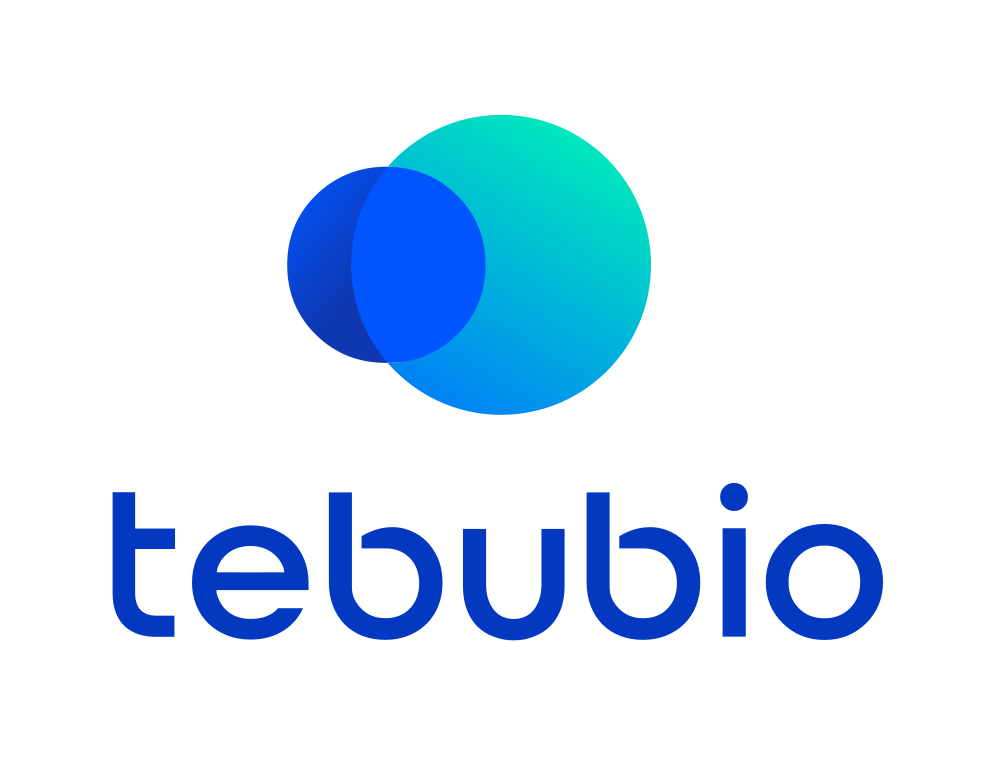
Like some help with selecting the right product?
Download the product selection guide here, or contact us, we'll be pleased to advise the best solution for your research.
1 - All-Fect
Designed as a siRNA pDNA transfection reagent, it can be used for either siRNA knockdown, plasmid DNA transformation or siRNA pDNA co-delivery. It is particularly suitable for mesenchymal stem cells from cord blood and bone marrow, and highly differentiated cells such as smooth muscle cells, and endothelial cells.
Benefits of All-Fect
- High transfection efficiency
Provides 2 to 3-fold higher efficacy in the presences of serum - Simple Protocol
No need to change tissue culture medium during transfection - Low Toxicity
Less toxic compared to commercial transfection reagents, leading to better retention of normal cellular physiology
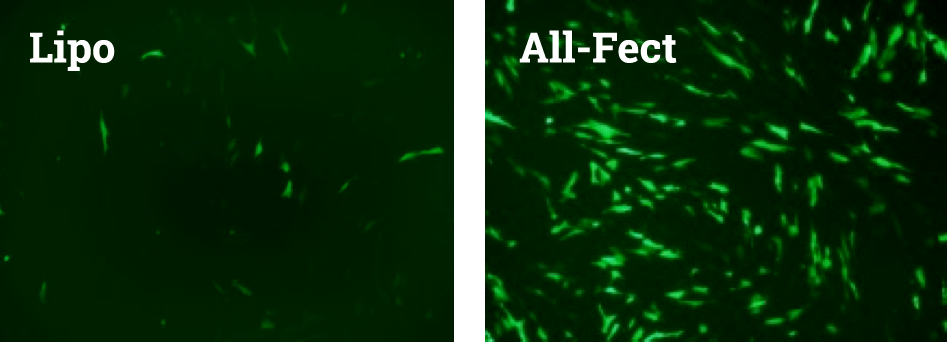
2 - Prime-Fect
This product is designed for transfection of primary cells with plasmid DNA. Prime-Fect has been tailored for attachment dependant cell plasmid DNA delivery, but also has been effective in siRNA delivery to attachment dependant cells and plasmid transfection of non-attachment dependant cells.
Benefits of Prime-Fect
- High transfection efficiency on primary cells
Provides 2 to 3-fold higher efficacy in the presences of serum - Simple Protocol
No need to change tissue culture medium during transfection - Toxicity
Less toxic compared to lipofection reagents, leading to minimal alteration of cell physiology
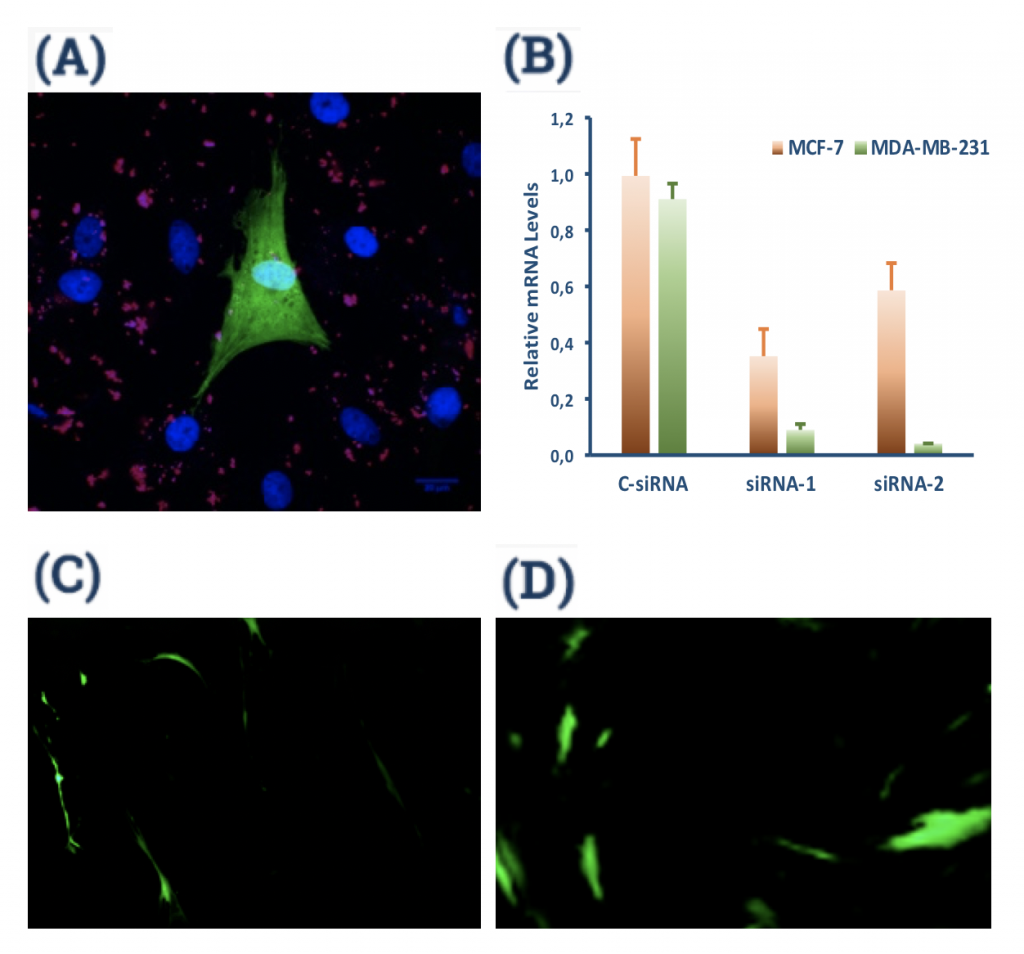
3 - mRNA-Fect
The mRNA-Fect reagent is a highly effective transfection reagent optimized for mRNA delivery to both attachment-dependent and suspension-growing cells. mRNA-Fect reagent is a synthetic amphiphilic polymer that is tailored primarily for mRNA delivery after extensive testing of amphiphilic polymer libraries. It can undergo multivalent interactions with polynucleotides and encapsulating co-incubated mRNA into approximately 100 nm particles with a net positive charge.
Benefits of mRNA-Fect
- High transfection efficiency
Provides 2 to 7-fold higher efficacy in the presences of serum compared with lipofection reagents - Simple Protocol
No need to change tissue culture medium during transfection - Toxicity
Less toxic compared to lipofection reagents, leading to minimal alteration of cell physiology
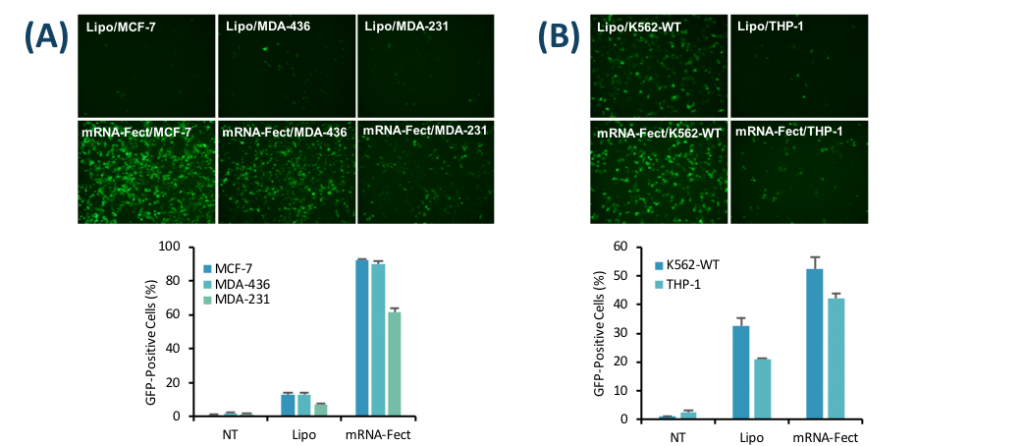
4 - In Vivo RNA-Fect
This product is designed for delivery of siRNA in mice tumor models. It can be directly administered into a specific site (e.g. intratumorally), or systematically (e.g. intraperitoneal, intravenous). It is a cost-effective alternative to PEI-based reagents marketed for in vivo applications. It's low toxicity allows for higher doses of nucleic acids to be administered without affecting the health of animal models.
Benefits of in vivo RNA-Fect
- High transfection efficiency
- Provides effective transfection under physiological conditions
- Simple Protocol
siRNA particles can be prepared in saline suitable for administration - Low Toxicity
Less toxic compared to other commercial transfecting reagents
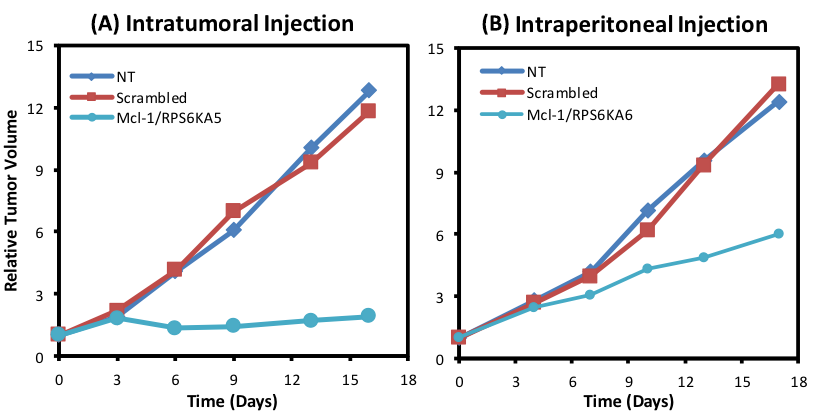
5 - In Vivo DNA-Fect
InVivo DNA-Fect is a highly effective delivery agent for use in animal studies. It is a cost-effective alternative to PEI-based reagents marketed for in vivo applications, with improved transfection efficiency. The application of current reagents is usually limited by their toxicity, which either limits the expression of the transgenes or alters the physiological response in the vicinity of the administered agents. The biocompatibility of In Vivo DNA-Fect minimally alters the cellular physiology, allowing a better response of the expressed transgenes.
Benefits of the in vivo DNA-Fect reagent:
- High transfection efficiency
Provides 2 to 3-fold higher efficacy under serum conditions - Simple Protocol
Can be administered with simple formulations such as saline - Toxicity
Less toxic compared to commercial transfecting reagents, leading to better protein yields from the transfected cells
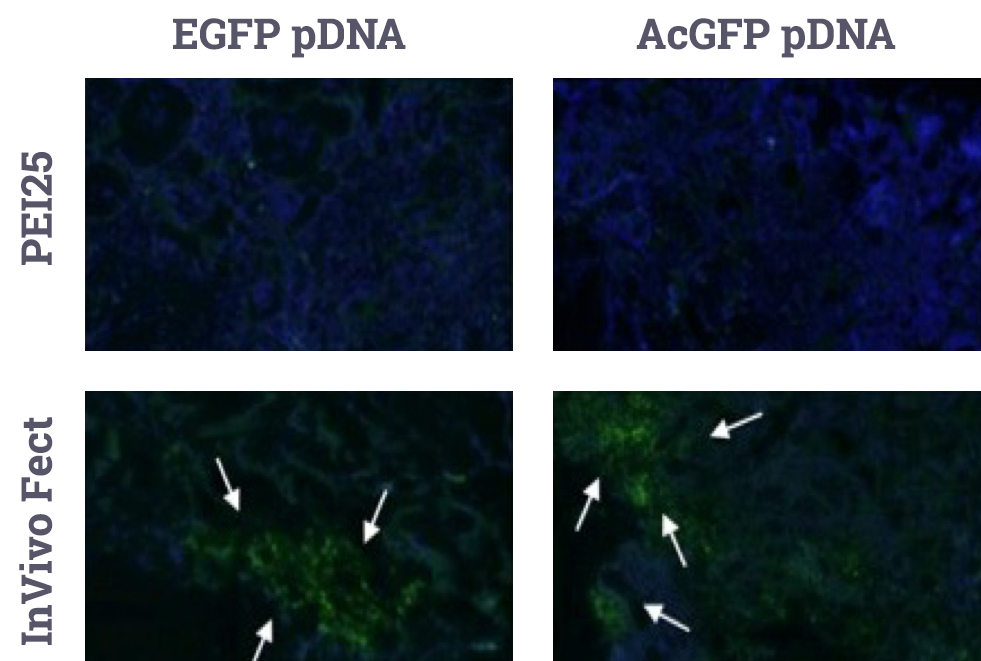
6 - Leu-Fect A & B
These products are designed for transfection of attachment-independent (suspension growing) cells and are specifically tailored for siRNA delivery. We offer two different formulations (Leu-Fect A and Leu Fect B) that are effective in different types of attachment-independent cells. We recommend the users to test the efficacy of both reagents in their particular cell type and choose the right formulation for long-term use.
Benefits of Leu-Fect A & B
- High transfection efficiency
Provides 2 to 3-fold higher efficacy in the presences of serum - Simple Protocol
No need to change tissue culture medium during transfection - Toxicity
Less toxic compared to lipofection reagents, leading to minimal alteration of cell physiology
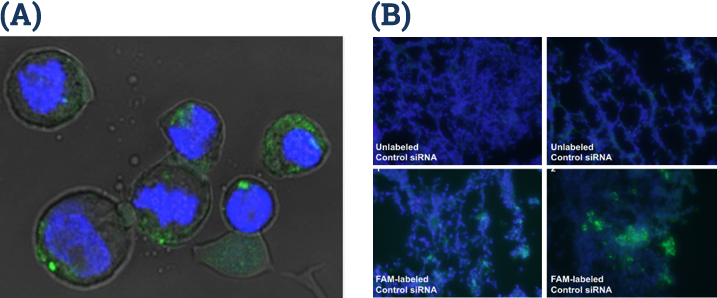

7 - Trans-Booster
This product is designed to enhance the transfection efficiency of plasmid DNA in attachment dependent and suspension-growing cells. Enhancing the transfection efficiency allows production of greater amount of protein for a desired effect, as well as allowing lower amount of DNA and transfection reagent to be used. This reagent could be also effective with other nucleic acids (siRNA, microRNA) depending on the cell type.
Benefits of Trans-Booster
- Higher transfection efficiency
Provides 2 to 3-fold higher efficacy in the presences of usual transfection reagent - Simple Protocol
No need to change tissue culture medium during transfection - Toxicity
Less toxic compared to lipofection and polymeric reagents, leading to better protein yields from the transfected cells - Stability
Long term stability at room temperature
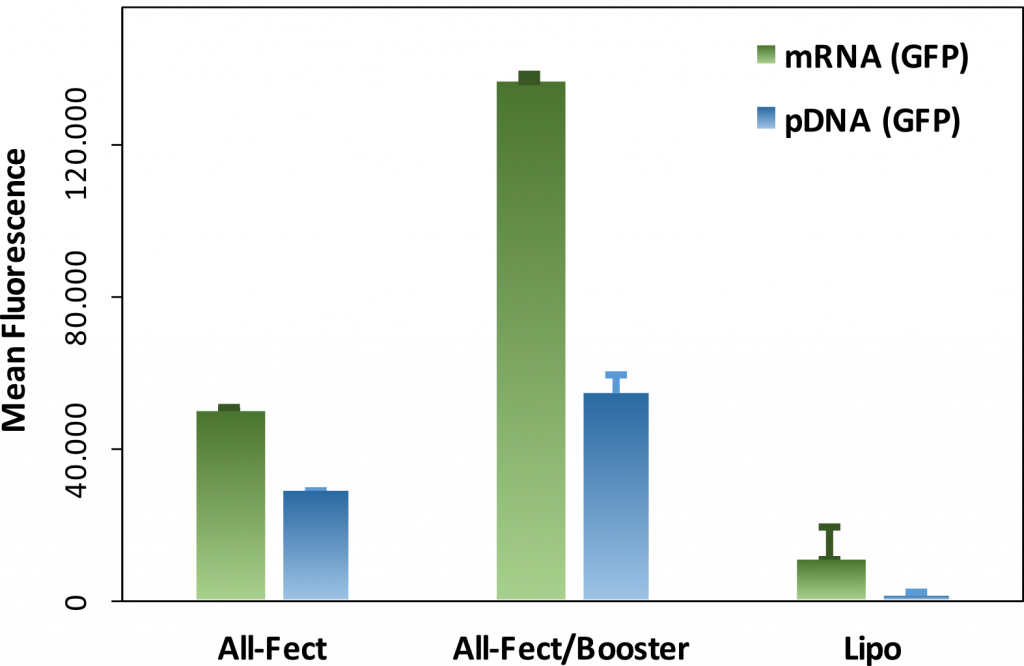
Validated cell & animal models
Cell Lines in Culture
- kidney fibroblast cells (293T) and epitheliam cells (MDCK)
- breast cancer cells (MDA-MB-231, MDA-MB-468, MDA-MB-436, SUM-149PT, MCF-7)
- chronic myeloid leukemia cells (K562)
- acute myeloid leukemia cells (THP-1, KG1, KG1A)
- acute lymphocytic leukemia cells (NALM-6 and MOLM-13)
- lymphoma cells (U937)
- lung cancer cells (A549)
- colon cancer cells (HCT-116)
- immortalized myoblast cells
Primary Cells in Culture
- primary mononuclear cells from blood and bone marrow
- skin fibroblasts
- vascular smooth muscle cells
- endothelial cells
- mesenchymal stem cells (human and rodent derived)
Animal models
- systemic and local injection of RNAi mediator siRNA
- local injection of pDNA and mRNA expression vectors

